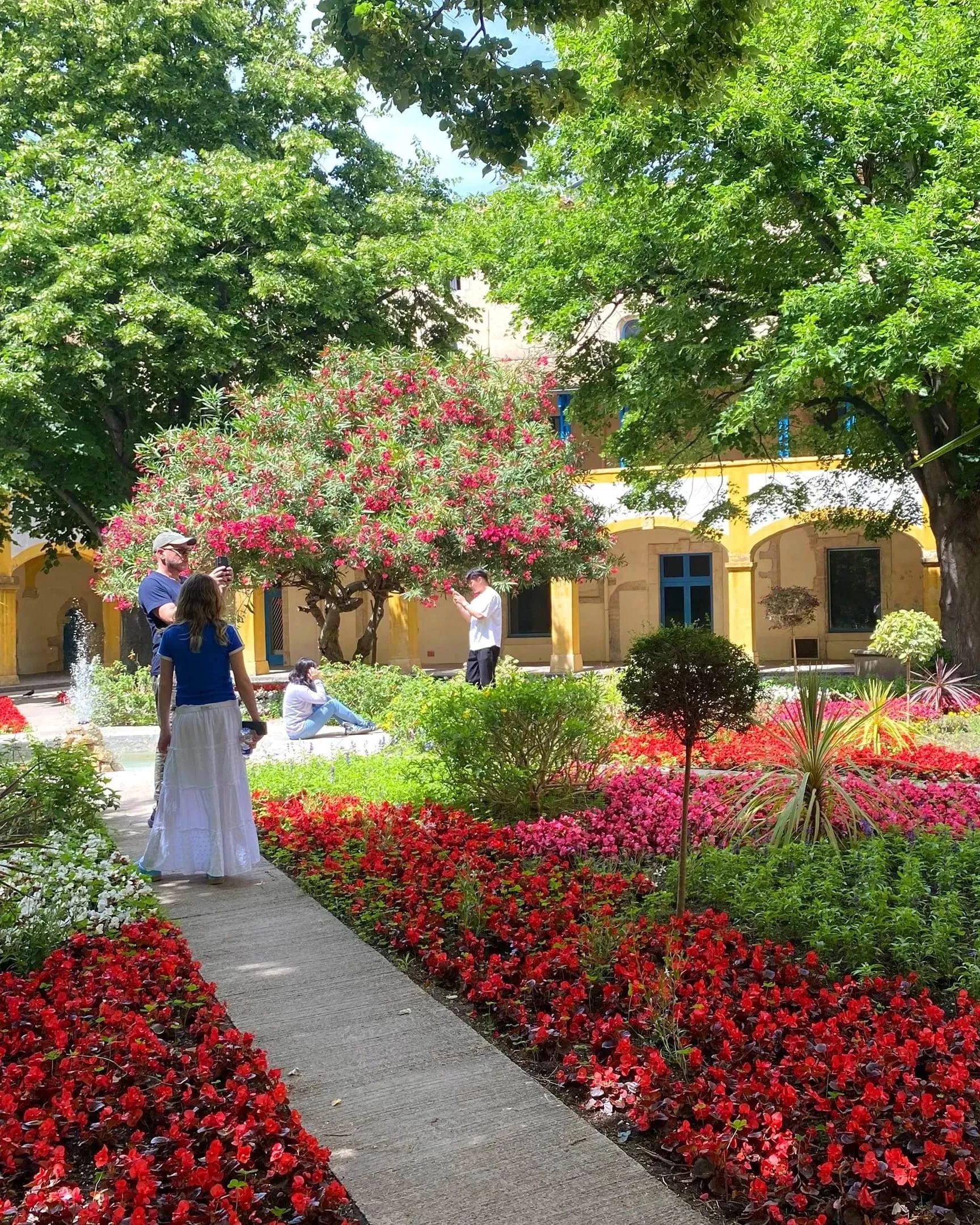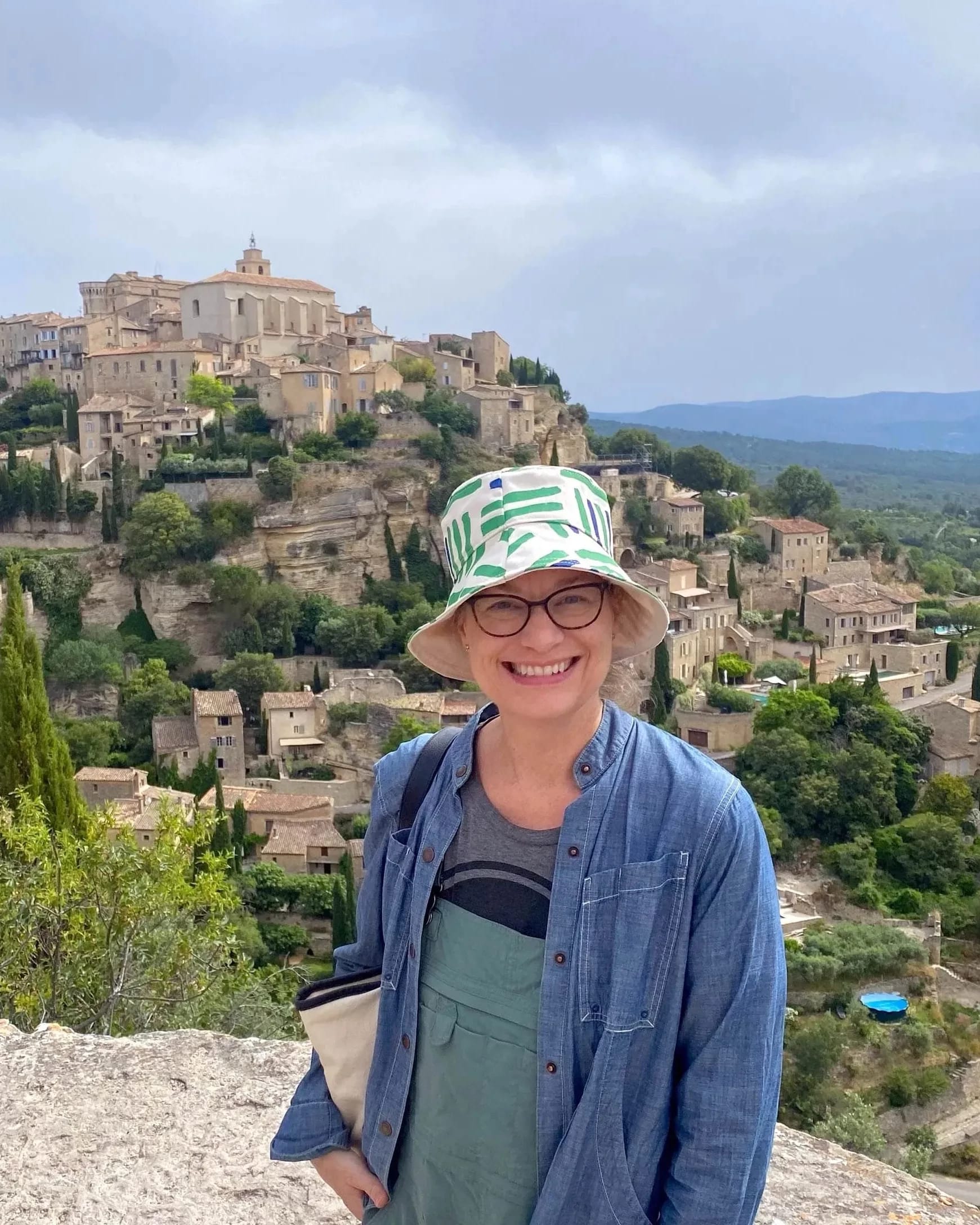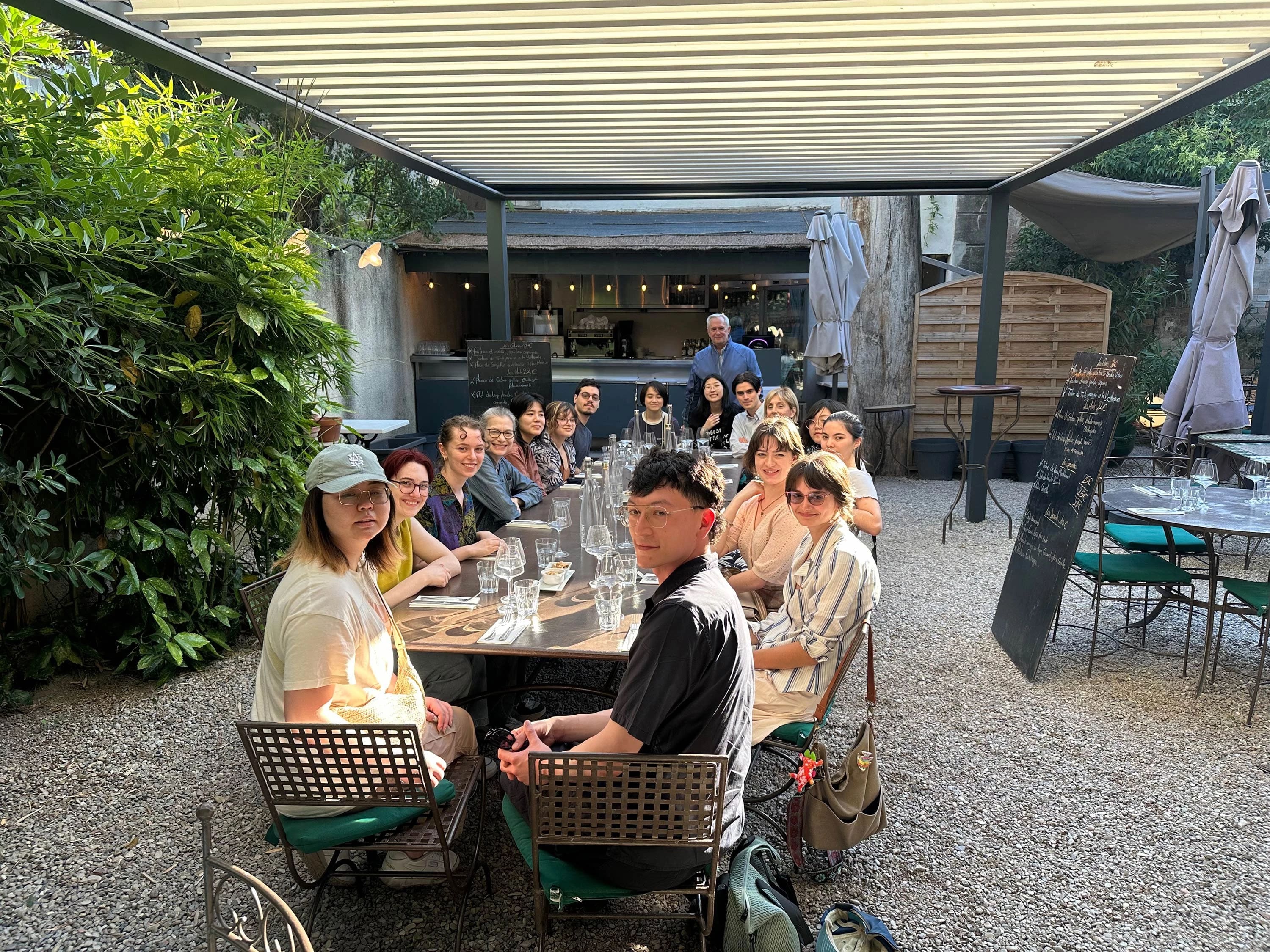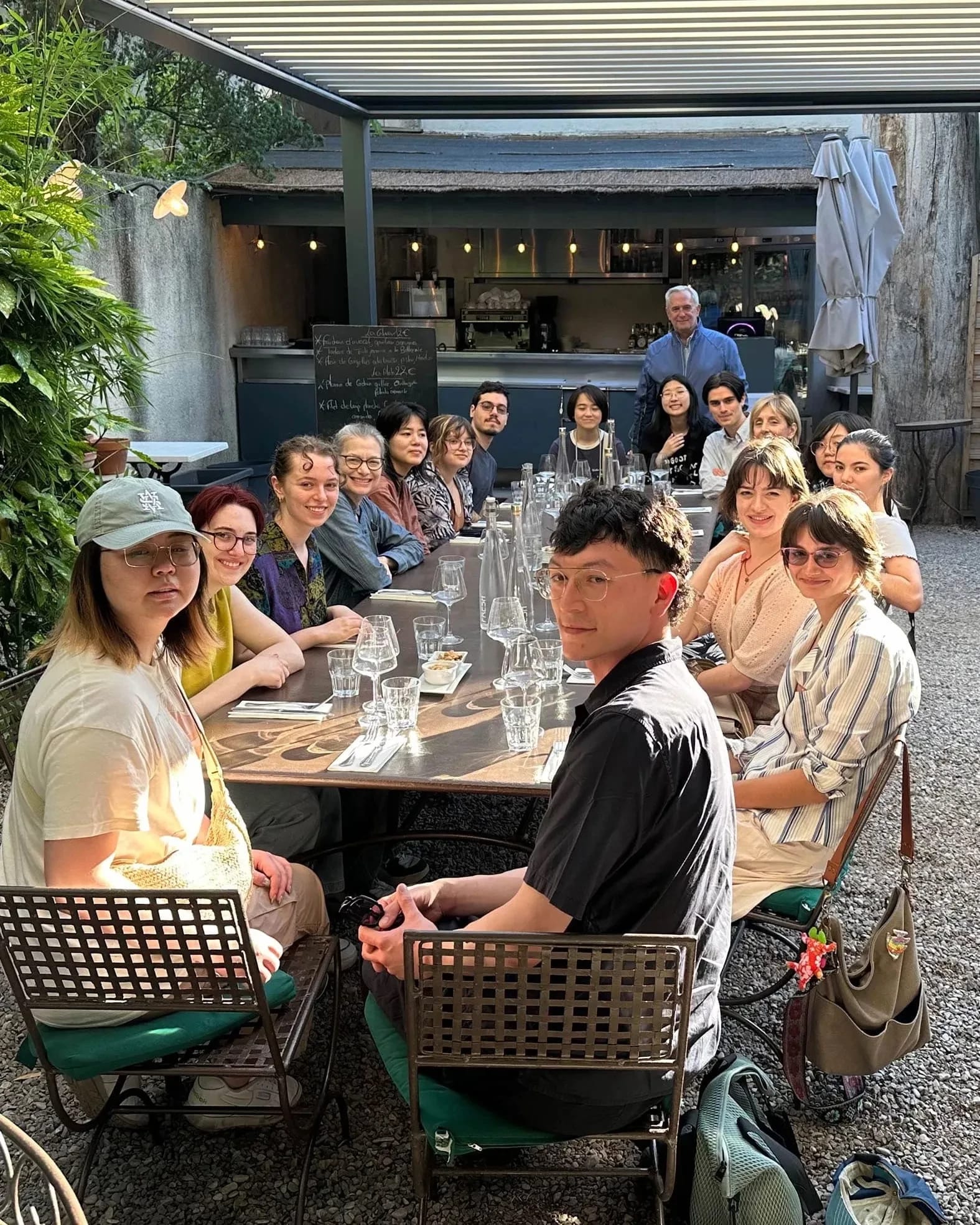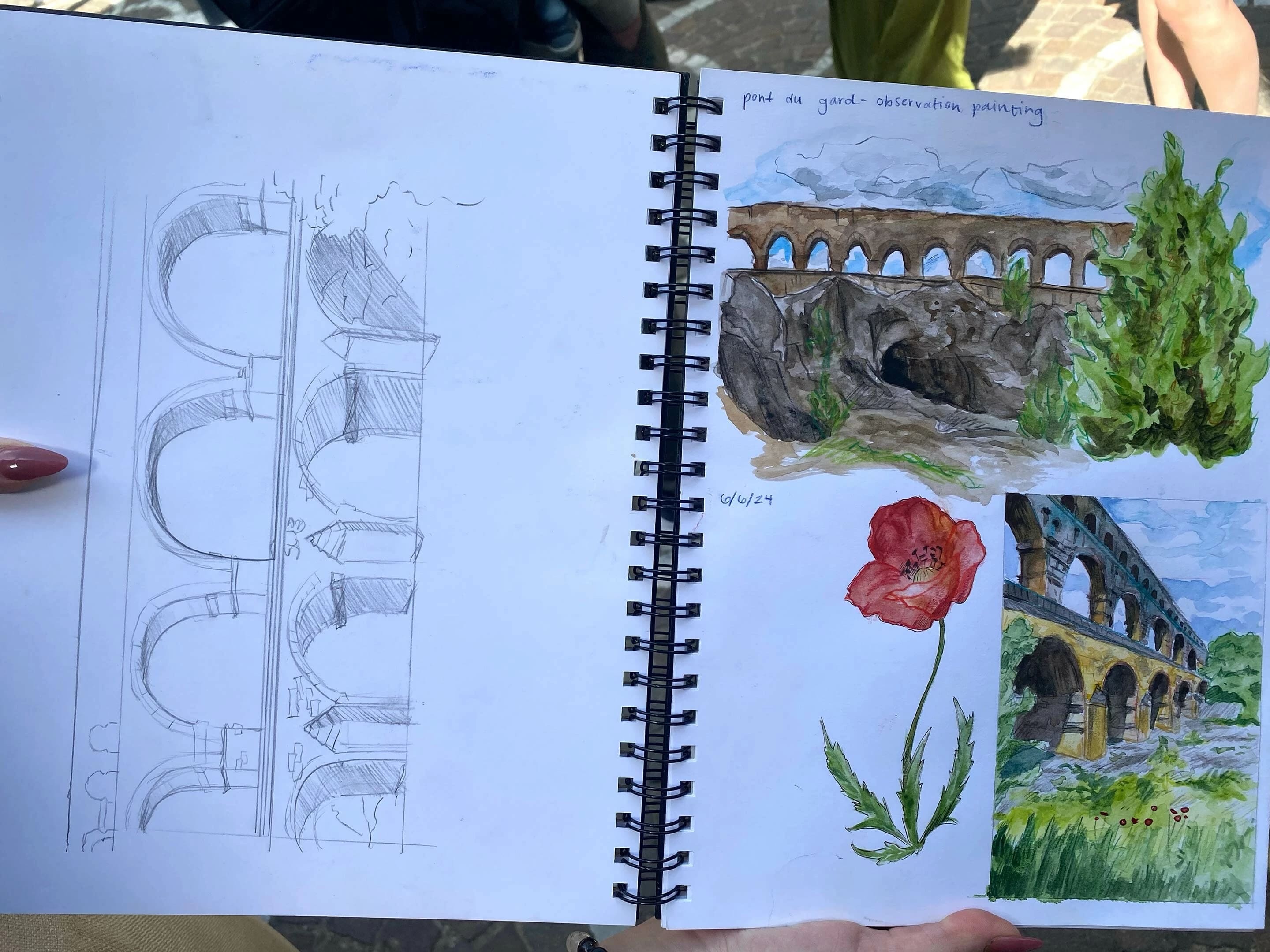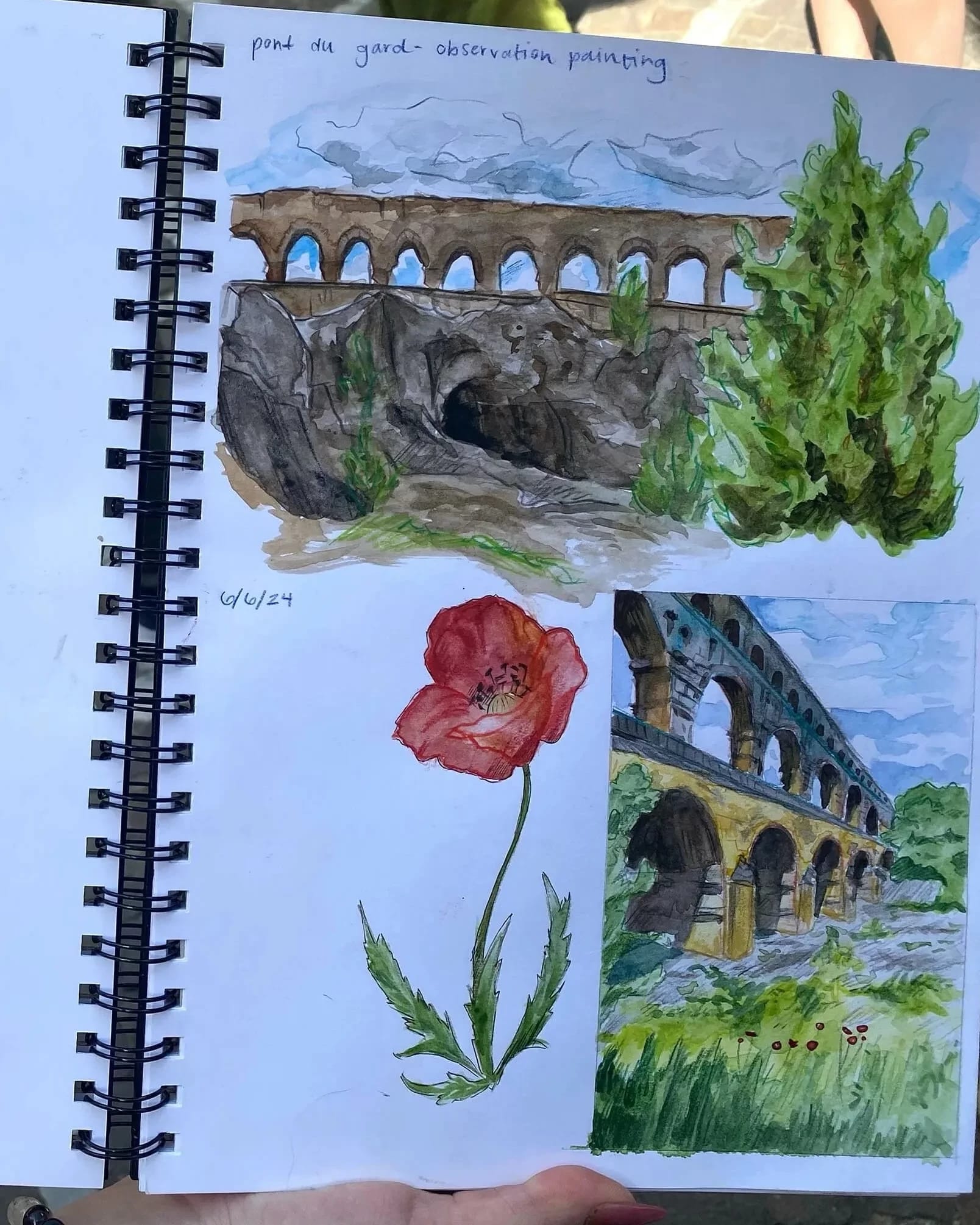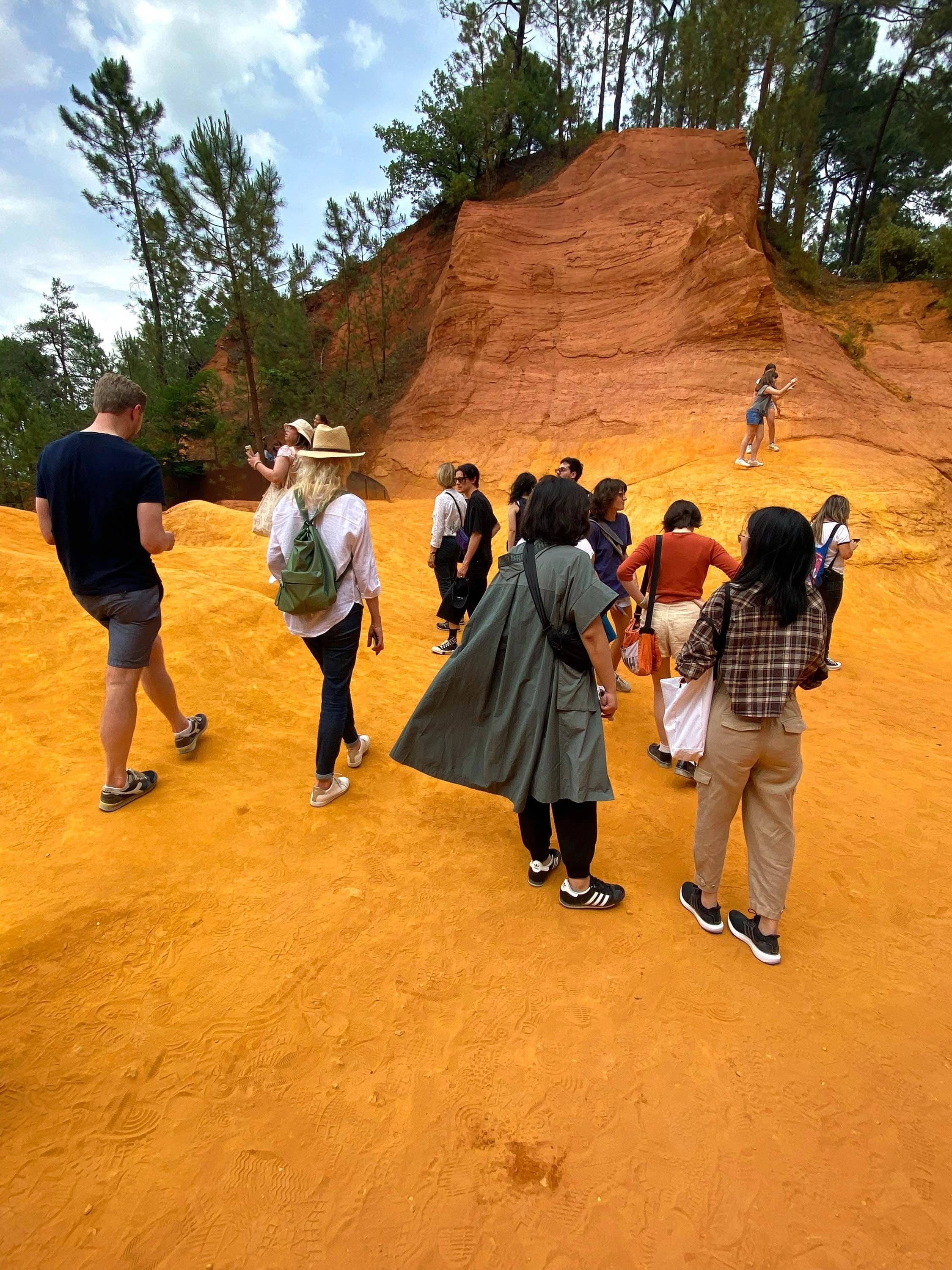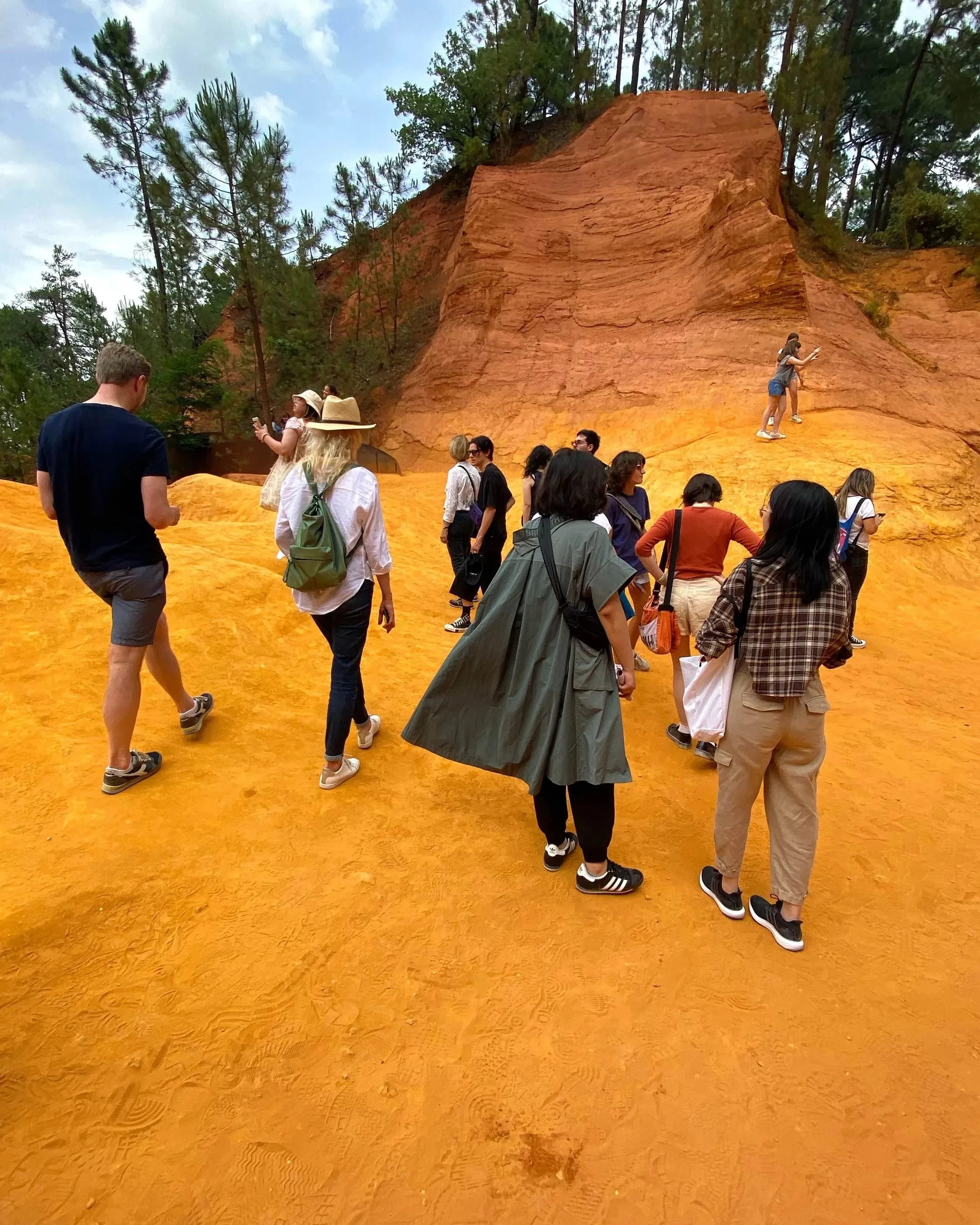Angie Wojak, executive director of SVA External Relations, discusses her experience on a recent SVA Destinations excursion.
The garden in the Arles, France, hospital where Vincent van Gogh painted and lived, one of many locations visited during the SVA Destinations program Drawing Art History in Southern France.
The garden in the Arles, France, hospital where Vincent van Gogh painted and lived, one of many locations visited during the SVA Destinations program Drawing Art History in Southern France.
SVA Destinations, an ongoing series of short-term, domestic and international travel-based programs offered by the School of Visual Arts, offer participants the opportunity for in-depth study, creative renewal and firsthand experience of inspiring locations and events around the world.
Led by SVA faculty Joey Gonnella (BFA 2020 Visual and Critical Studies), David Moy (digital print-lab manager at BFA Fine Arts), and Laurence Minard-Amalou, the recently concluded SVA Destinations program, Drawing Art History in Southern France, combined on-site drawing sessions with the study of art history. The areas of focus—Provence, the Ardeche and the Southern Rhône Valley—offered everything from the prehistoric caves of Chauvet to ancient Roman towns and monuments of the Middle Ages. Students investigated Romanesque and Gothic history, the work of Vincent van Gogh and Paul Cézanne and visited contemporary art museums in the region.
Angie Wojak (BFA 1990 Media Arts), executive director of the College’s External Relations division, participated in the trip this year and we spoke to her recently about the experience.
Angie Wojak (BFA 1990 Media Arts), executive director of SVA External Relations, on the SVA Destinations trip Drawing Art History in Southern France.
Angie Wojak (BFA 1990 Media Arts), executive director of SVA External Relations, on the SVA Destinations trip Drawing Art History in Southern France.
What element of art history did you learn about that surprised you the most?
The ancient Roman history and amazingly preserved monuments, such as the Nimes and Arles amphitheaters, were stunning. I didn’t realize how significant architecture and engineering had been in Provence during Roman times. It was fascinating to explore and discuss the structures and the area’s history, from ancient times to the current day. We learned, for example, how castles were built and later modified to serve as fortresses against invaders. We also learned how amphitheaters went from being built for gladiatorial combat spectacles and later were used as safely walled-off living quarters for whole villages.
Was there any particular highlight of the trip?
Visiting Saint Paul de Mausole Monastery, the clinic in Saint-Rémy where Vincent van Gogh created some of his best-known work, was probably the major highlight—walking in his footsteps there was really special.
Additionally, there were less structured times when the class had the chance to go swimming in beautiful places such as the Pont du Arch in the Ardèche Gorge. The natural wonder of the landscape was breathtaking and it was fun to watch local people enjoying the river alongside us.
Tony Rhodes, executive vice president of the School of Visual Arts, stands at the head of the table with the Drawing Art History in Southern France SVA Destinations class during the group’s welcome dinner.
Tony Rhodes, executive vice president of the School of Visual Arts, stands at the head of the table with the Drawing Art History in Southern France SVA Destinations class during the group’s welcome dinner.
What did you think most inspired the students?
There were countless special moments, but I think that learning about Paul Cézanne, visiting where he lived and worked, and then drawing and painting Mont Sainte-Victoire, which he famously painted, was a great experience. A student who went on to Paris after the program wrote to the rest of the class that she found one of Cézanne’s paintings of the mountain in a museum.
What were your favorite museum trip?
Everyone enjoyed the Roman Museum in Nimes, where the class sketched ancient artifacts. The Petit Palais was a terrific museum of Medieval through Renaissance artwork in Avignon. And the LUMA museum in Arles was a spectacular space designed by Frank Gehry to showcase contemporary art.
In addition to the museums, it was inspiring to explore uniquely charming and picturesque villages, such as the Luberon region and Roussillon, where art materials are derived from the rich yellow and red ochre hills. There was also Tarascon Castle, which we seemed to have all to ourselves. We learned about Medieval tales of the Beast of Tarascon and how the town celebrates its history with an annual festival named for the creature.
What did you think of the experience of sketching on location?
Since we were visiting places with such a rich art-historical background, it was a combination of learning about how and where artists like Paul Cézanne and van Gogh worked and developing one’s own practice. For example, at the Montmajour Abbey, where van Gogh made many paintings and drawings, we had a workshop about how he used natural materials, such as reeds found in the fields to create pens. The students watched the pens being carved and some joined in cutting and shaping their own. They then studied van Gogh’s drawings he created in the space and made their own sketches using the same tools.
Other on-site drawing sessions took place at the ancient Roman aqueduct and the Pont du Gard. Some students created glowing watercolor landscapes, while others made bold-stroke ink sketches. The diversity of the work was fun to compare and contrast, and the talent of the students was incredibly inspiring. By the end of the two-week program, each had created a sketchbook that served as a visual travelog for the group’s journey.
A sketch of the Pont du Gard bridge near the village of Vers-Pont-du-Gard, drawn by SVA Destinations student Evelyn Brabant. See another one of her sketches in the gallery below.
A sketch of the Pont du Gard bridge near the village of Vers-Pont-du-Gard, drawn by SVA Destinations student Evelyn Brabant. See another one of her sketches in the gallery below.
The full cultural experience also seems to be part of it all. What was the best thing you ate?
I loved the Avignon food market, Les Halles, which we frequented throughout the trip. I would buy cheeses and fresh fruit there every morning to share at our breakfasts together. So I have to single out the cheeses. We also discovered some desserts many of us hadn’t had before. My favorite was the pavlova, a meringue served on a crisp crust and topped with fresh fruit.
You visited places that inspired van Gogh; what were they like?
It was a moving experience. In Saint-Rémy, we visited the asylum and gardens where he lived and painted during his final years.
We also saw and sketched the bridge and river that inspired van Gogh’s Starry Night Over the Rhône, one of his paintings of Arles at night. It was only a one or two-minute walk from the “yellow house” where he lived and worked briefly with Paul Gauguin. And then we walked to the van Gogh Foundation Museum, where the painting was on loan for the first time from the Musée d’Orsay.
The Drawing Art History in Southern France SVA Destinations class exploring near the village of Roussillon, famous for its red and yellow cliffs and ochre deposits.
The Drawing Art History in Southern France SVA Destinations class exploring near the village of Roussillon, famous for its red and yellow cliffs and ochre deposits.
What do you think the ultimate takeaway was for participants?
I think we all understood that this was a once-in-a-lifetime opportunity and in-depth introduction to the history, art and culture of Southern France. The takeaway for many students, I believe, is that they should continue to engage with the world and other cultures, and travel to enhance and inspire their own practice.
I also think that students got a lot of experience with en plein air drawing and painting that will inspire them to do such work more often once they return home. And finally, students were able to delve into the art history of the region across many centuries and will always remember visiting the actual places where great art, from ancient cave paintings to contemporary works, were created.




